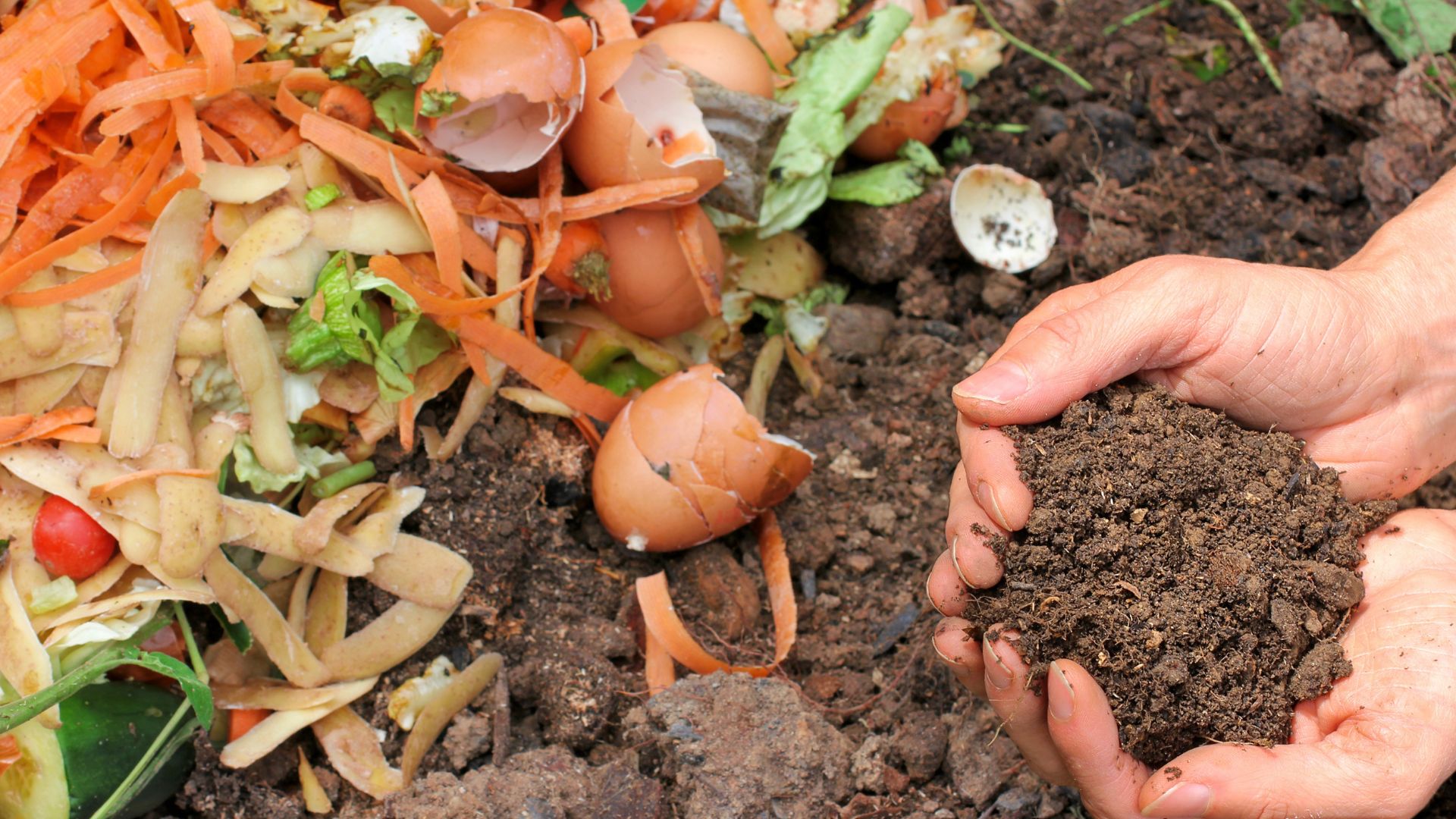Lifestyle
Vikki Gerrard Shares How To Start An Eco-Friendly Home Composting System

The world is facing a major environmental crisis, and it’s our responsibility to do what we can. We can do our part by starting an eco-friendly home composting system. Composting is a simple and effective way to reduce waste and create nutrient-rich soil for your garden. The expert, Vikki Gerrard La Crosse WI has some tips for you. This blog post, La Crosse WI, will share nine ways to start an eco-friendly home composting system.
Choose a Composting Method That Works for You:
Several composting methods include traditional composting, vermicomposting, and hot composting. Each method has pros and cons, so choose one that works for your needs and lifestyle. For example, if you have limited space, vermicomposting (using worms) might be better than traditional composting. Therefore, carefully considering which method would work best for your home is essential.
Gather the Right Materials:
For a successful composting system, you’ll need a few basic materials such as organic materials like food scraps, leaves, grass clippings, and animal manure; a bin or container; and a supply of air. Depending on your composting system, you may need additional materials, such as bedding, for vermicomposting.
Pick the Right Location:
Your compost bin needs to be in a location that is easily accessible but also out of the way. You don’t want it in a high-traffic area, but it also needs to be convenient enough that you’ll use it regularly. It should also be in a spot that receives sunlight but isn’t too hot.
One way to get started is by sectioning off a corner in your yard using wood or plastic bins.
Add the Right Materials:
Composting requires a mix of “green” and “brown” materials. Green materials include vegetable and fruit scraps, while brown materials include leaves, sawdust, and newspaper. It’s important to add the right mix of materials to your compost bin to keep it balanced. Too much of one type of material can lead to a smelly, slow-to-mature compost.
For example, adding too much grass clippings can create an environment that’s too wet and lead to mold or fungus growth.
Stir Regularly:
For your compost pile to break down efficiently, you’ll need to stir it regularly. You don’t need any special equipment – a pitchfork or shovel will do the trick – but stirring helps move oxygen throughout the pile, which helps to break down the materials and create compost faster.
You can also add water to your compost pile, but be careful not to overdo it. Too much water can create an environment that’s too wet, leading to mold or fungus growth.
Avoid Certain Foods:
While many food scraps are great for composting, there are some foods you should avoid. These include meats, dairy products, oils, and fats. These items can attract rodents and other pests, and they can also slow down the decomposition process.
On the other hand, you can add eggshells, coffee grounds, and tea bags, as these are all excellent sources of nutrients for your compost.
Maintain Your Compost Bin:
To keep your composting system running smoothly, you’ll need to maintain your compost bin. This means turning the compost regularly to help it break down more quickly and adding water to keep it moist. You’ll also need to keep an eye on the level of your compost bin – if it’s too full, you’ll need to start a new bin or find ways to use the compost you already have.
Use Your Compost:
Once your compost is ready, you can use it to fertilize your garden. This nutrient-rich soil is excellent for plants and can help reduce the need for chemical fertilizers. You can also use it for potted plants or give it to friends and family.
Another way to use your compost is by donating it to local farms. Many small-scale farmers require nutrient-rich soil and would be happy to take your compost off your hands.
Troubleshoot Common Problems:
While composting is a relatively simple process, there can be some issues you’ll need to troubleshoot. These can include problems like odors, pests, and slow decomposition. To troubleshoot these issues, you may need to adjust the mix of materials you’re adding to your compost bin or change the location of the bin.
Additionally, you may need to ensure your compost pile is getting enough air or add some water to help speed up the decomposition process.
Conclusion:
Vikki Gerrard La Crosse WI understands that starting an eco-friendly home composting system doesn’t have to be complicated. By following these nine tips, you can create nutrient-rich soil for your garden and do your part to reduce waste. Remember to choose a composting method that works for you, add the right materials, avoid certain foods, maintain your compost bin, use your compost, and troubleshoot common problems. You can contribute to a healthier planet with little time and effort.
Lifestyle
Wanda Knight on Blending Culture, Style, and Leadership Through Travel

The best lessons in leadership do not always come from a classroom or a boardroom. Sometimes they come from a crowded market in a foreign city, a train ride through unfamiliar landscapes, or a quiet conversation with someone whose life looks very different from your own.
Wanda Knight has built her career in enterprise sales and leadership for more than three decades, working with some of the world’s largest companies and guiding teams through constant change. But ask her what shaped her most, and she will point not just to her professional milestones but to the way travel has expanded her perspective. With 38 countries visited and more on the horizon, her worldview has been formed as much by her passport as by her resume.
Travel entered her life early. Her parents valued exploration, and before she began college, she had already lived in Italy. That experience, stepping into a different culture at such a young age, left a lasting impression. It showed her that the world was much bigger than the environment she grew up in and that adaptability was not just useful, it was necessary. Those early lessons of curiosity and openness would later shape the way she led in business.
Sales, at its core, is about connection. Numbers matter, but relationships determine long-term success. Wanda’s time abroad taught her how to connect across differences. Navigating unfamiliar places and adjusting to environments that operated on different expectations gave her the patience and awareness to understand people first, and business second. That approach carried over into leadership, where she built a reputation for giving her teams the space to take ownership while standing firmly behind them when it mattered most.
The link between travel and leadership becomes even clearer in moments of challenge. Unfamiliar settings require flexibility, quick decision-making, and the ability to stay calm under pressure. The same skills are critical in enterprise sales, where strategies shift quickly and no deal is ever guaranteed. Knight learned that success comes from being willing to step into the unknown, whether that means exploring a new country or taking on a leadership role she had not originally planned to pursue.
Her travels have also influenced her eye for style and her creative pursuits. Fashion, for Wanda, is more than clothing; it is a reflection of culture, history, and identity. Experiencing how different communities express themselves, from the craftsmanship of Italian textiles to the energy of street style in cities around the world, has deepened her appreciation for aesthetics as a form of storytelling. Rather than keeping her professional and personal worlds separate, she has learned to blend them, carrying the discipline and strategy of her sales career into her creative interests and vice versa.
None of this has been about starting over. It has been about adding layers, expanding her perspective without erasing the experiences that came before. Wanda’s story is not one of leaving a career behind but of integrating all the parts of who she is: a leader shaped by high-stakes business, a traveler shaped by global culture, and a creative voice learning to merge both worlds.
What stands out most is how she continues to approach both leadership and life with the same curiosity that first took her beyond her comfort zone. Each new country is an opportunity to learn, just as each new role has been a chance to grow. For those looking at her path, the lesson is clear: leadership is not about staying in one lane; it is about collecting experiences that teach you how to see, how to adapt, and how to connect.
As she looks to the future, Wanda Knight’s compass still points outward. She will keep adding stamps to her passport, finding inspiration in new cultures, and carrying those insights back into the rooms where strategy is shaped and decisions are made. Her legacy will not be measured only by deals closed or positions held but by the perspective she brought, and the way she showed that leading with a global view can change the story for everyone around you.
-

 Tech5 years ago
Tech5 years agoEffuel Reviews (2021) – Effuel ECO OBD2 Saves Fuel, and Reduce Gas Cost? Effuel Customer Reviews
-

 Tech6 years ago
Tech6 years agoBosch Power Tools India Launches ‘Cordless Matlab Bosch’ Campaign to Demonstrate the Power of Cordless
-

 Lifestyle6 years ago
Lifestyle6 years agoCatholic Cases App brings Church’s Moral Teachings to Androids and iPhones
-

 Lifestyle5 years ago
Lifestyle5 years agoEast Side Hype x Billionaire Boys Club. Hottest New Streetwear Releases in Utah.
-

 Tech7 years ago
Tech7 years agoCloud Buyers & Investors to Profit in the Future
-

 Lifestyle5 years ago
Lifestyle5 years agoThe Midas of Cosmetic Dermatology: Dr. Simon Ourian
-

 Health7 years ago
Health7 years agoCBDistillery Review: Is it a scam?
-

 Entertainment6 years ago
Entertainment6 years agoAvengers Endgame now Available on 123Movies for Download & Streaming for Free
